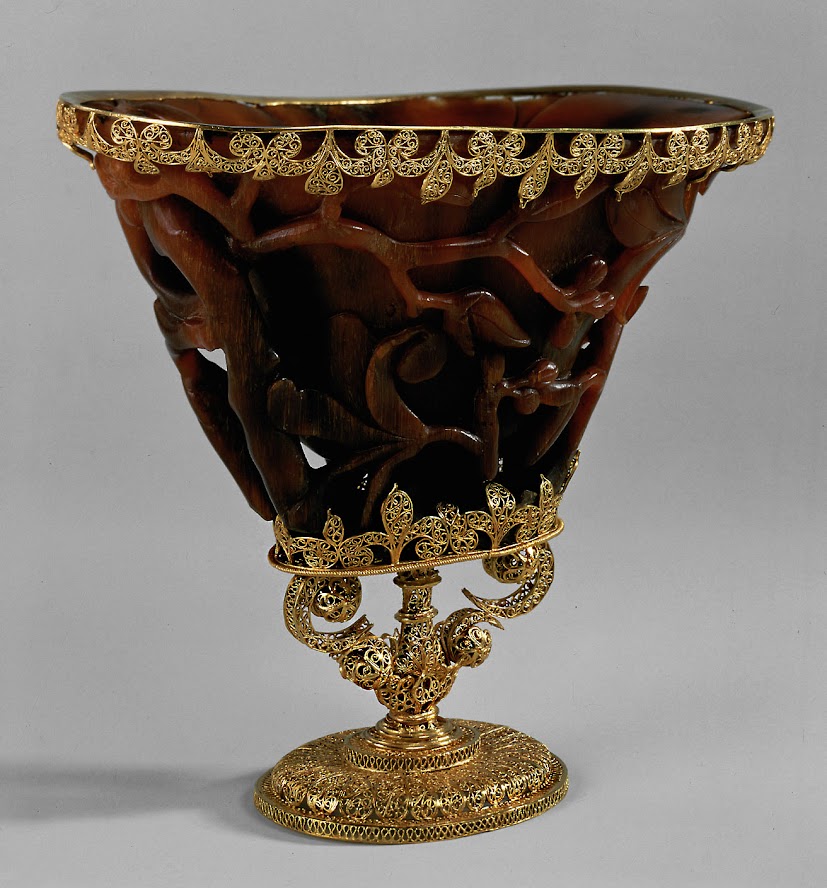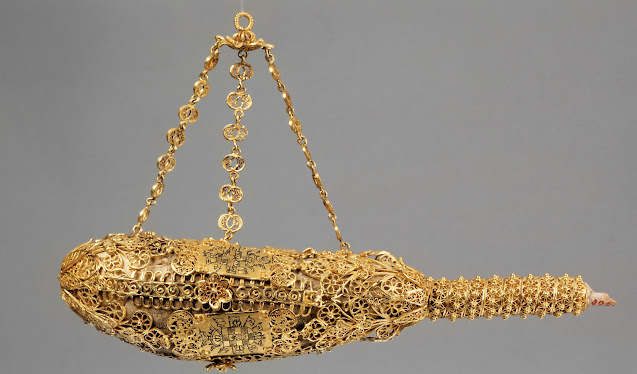Gold Filigree Objects in the Kunst Historisches Museum, Vienna.
All images Copyright ©KHM-Museumsverband
see below for use of these images.
https://www.khm.at/typo3conf/ext/objectdb/Resources/Public/AGB_Bilddatenbank.pdf
Museum description says 16th Century.
Size 3.6 x 10.3 cms.
https://www.khm.at/de/object/87194/
................................
Another Gold Filigree Basket.
3.6 x 10.3 cms,
.............................
Gold Filigree Casket.
17th Century.
Enriched with diamonds.
H. 9.7 cm, B. 16 cm, T. 10.2 cms.
They say Goa - I believe European.
...................................
A Casket Possibly related to the KHM casket above.
.......................
Bezoar with Gold Filigree Mounts.
The Museum suggests late 16th Century.
Size approx 9cms.
The bezoar is the stomach stone of the Asian bezoar goat or the South American llama. Less valuable stones were also obtained from other animals such as chamois and cattle. The bezoar consists of swallowed indigestible materials. Its name derives from the Persian word bâd-sahr, meaning antidote.
In folk medicine it was called the "stone against all poison", "health stone" and "stomach stone". Grated and added to a liquid in small amounts, the bezoar was considered a remedy for poisoning, epilepsy, plague and melancholy in the Middle Ages and early modern times.
However, the bezoar could also just be dipped into the liquid, for which purpose it received a valuable setting. Furnished with valuable goldsmith work, bezoars not only represented important medicinalbut also valuable gifts from princes. It is known that Rudolf II valued bezoars as a remedy against melancholy. There was originally no bezoar in Archduke Ferdinand II's cabinet of art and curiosities.
This bezoar comes from the imperial treasury in Vienna.
https://www.khm.at/de/object/87195/
...........................
17th Century Bezoar Stone with Gold Filigree Mounts.
The Museum suggests the 4th Quarter of the Seventeenth Century - Goa. (no evidence of any filigree production in Goa - see - Crespo.
Height 11.6 cm × 7.6 cms.
The small comma shape elements certainly suggests India as the place of origin.
More comparative research is needed on the forms that filigree takes in the 17th and 18th Century from different parts of the world.
...............................
17th century silver filigree mount.
https://www.khm.at/de/object/89746/
..................................
Another Chinese cup made from the horn of the Javan Rhinoceros.
Rhinoceros Horn Cup with Gold Filigree Mount.
17th Century?
Horn of the Javan Rhinoceros (Rhinoceros sondaicus),
H. 15,5 cm, B. 17,6 cm, T. 10 cm
..................................
There is a similarly mounted Rhinoceros Horn in the Museum in Oporto.
The mount on this cup appears to be Indian in style with the small comma shaped elements.
Better photographs would help!
__________________
The Bezoar of the Duke of Alba (1508 - 82).
16 cms.


.jpg)












No comments:
Post a Comment